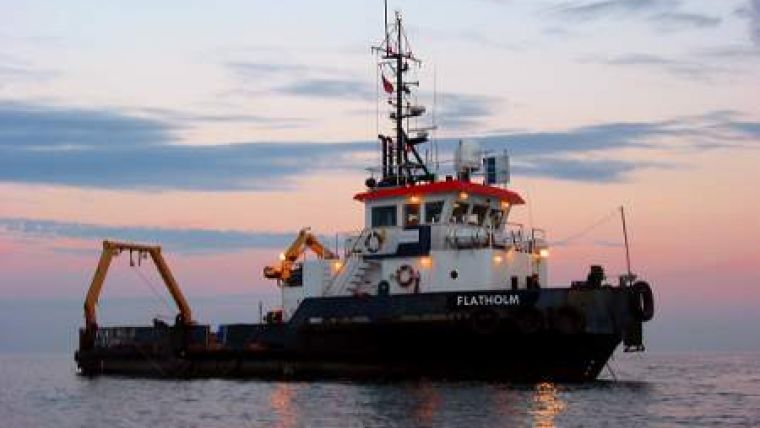Extensive Vibrocore Campaign
Coastline Surveys, UK, has recently completed two large geotechnical Vibrocore campaigns for Hanson Aggregates Marine (HAML). The first work scope comprised 58 core locations offshore Norfolk. Specialist geotechnical survey vessel MV Flatholm was mobilised and the work scope was completed with Coastline’s high-powered vibrocorer, C-Core-HP, in 5m configuration, with an overall average recovery of 4 metres.
The second work scope comprised 70 core locations, spread over four licence areas, offshore of Lincolnshire and North Norfolk, the furthest area being 27 miles off the North Norfolk coast. Overall, the work was completed port to port, Lowestoft, in less than 4 days with an average recovery of 4m completed by the team onboard.
The favourable weather allowed the vessel to remain on site overnight throughout the work scope, without requirement to return to port each evening. This ability reduces the likelihood of encountering poor weather (and therefore standby costs), maximises on-site time and reduces unnecessary steaming and fuel consumption, an increasingly important issue with new larger, higher powered (therefore high fuel consumption) vessels entering the market.
field Systems’ Gulf of Mexico map is the only one of its kind and includes locations for this region’s vast infrastructure and the current status of developments.
This pioneer region has long been the subject of intense industry focus and never more so than now. With an ageing infrastructure, new and more stringent licensing regulations and many developments either past peak production or at the end of their productive life, operators are keen to utilise technological advancements to maximise production from aging and marginal fields. Whilst depending upon this ageing infrastructure has not restricted the growth of modern field developments, the cost and time saving benefits may be outweighed by increased operating costs and transit costs, as well as the increased potential for leakage, and all its associated risks.
In the wake of Macondo, a series of environmental safeguards were implemented which included heightened drilling safety standards to reduce the chances that a loss of well control may occur, in addition to a new focus on containment capabilities in the event of a spill. Almost two years after the Macondo disaster, activities within the US GoM are finally getting back on track. There has been a significant recovery in permits issued and drilling activity - since February 2011, the Bureau of Safety and Environmental Enforcement (BSEE) has approved 332 deepwater permit applicants where subsea containment is required. The recent spill at Shell’s Appomattox prospect has, however, served to remind the industry of the risks involved in operating in these challenging waters. Whilst environmental opposition remains heightened, with some of the highest energy consumption levels in the world and with an increasing number of prospects in deep and ultra deepwater zones in particular, the US GoM remains highly attractive to operators, despite the tighter regulatory demands.














